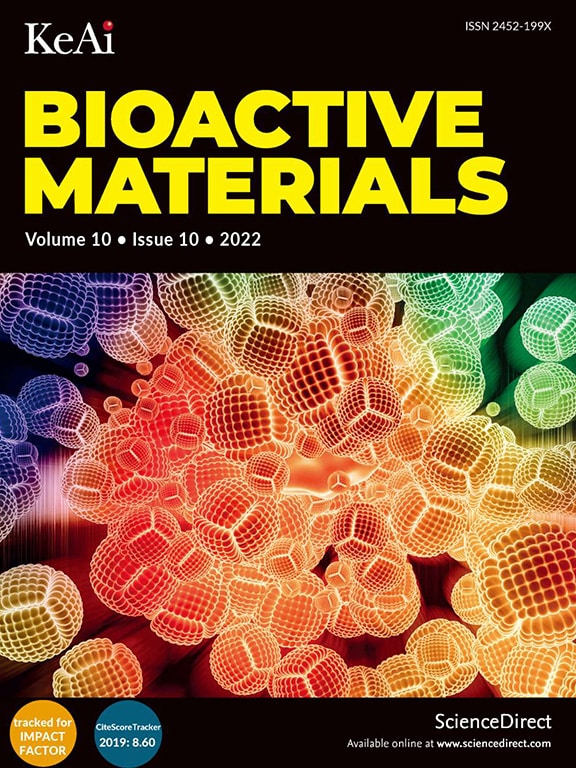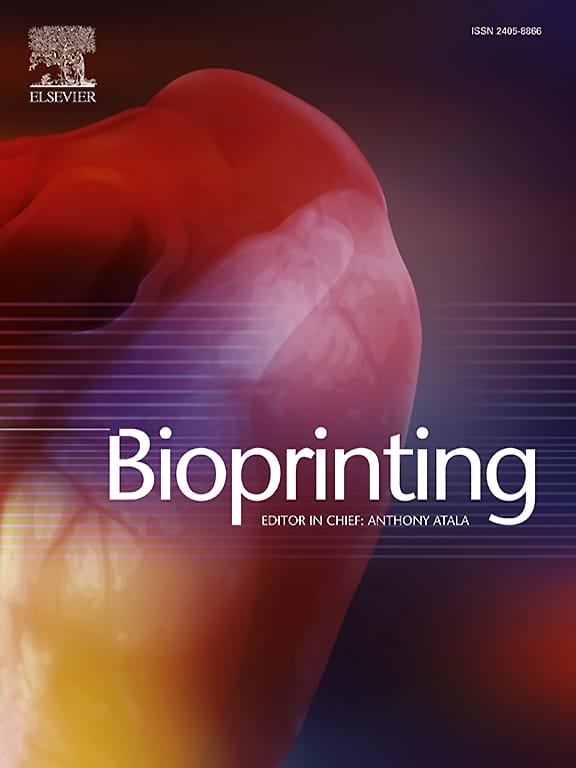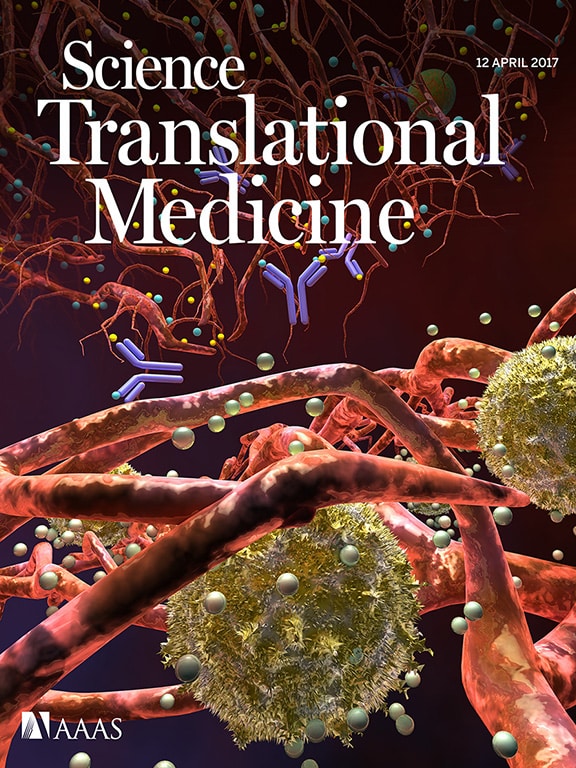Scientific Papers
Contributions to the Evolution of Modern Science
Scientific Papers
Written by David F Williams
Introduction
Papers published in peer-reviewed journals constitute the heart of the output, achievements and reputations of scientists. Arguments have raged for decades over the quality and influence of journals, and I regret that the discussions about this have become more confused and distorted in recent years. It is still possible to recognize the most influential journals (e.g., Nature, New England Journal of Medicine, Science, Lancet, Cell) but the increasing commercialization of academic publishing and the promotion of so-called ‘Open Access’ means that any paper, however poor, can get published somewhere, especially if the author or sponsor is willing to pay. In 2015, the Springer publishing group merged with the Nature Group and there has been an explosion of titles published under this imprint, with 32 Nature Research Journals and 20 Nature Reviews Journals. With most academic journals, the editor is no longer an active scientist but a publishing administrator.
Be that as it may, we have to live and work in this environment and strive to publish quality papers in the most relevant places; after all, if our work is not exposed in this way, there is little point in carrying out research in the first place (making allowance for the protection of intellectual property and legitimate security considerations). The comments made in the home page section on “The Importance of the Written Word” are relevant here, and the quality and clarity of scientific writing should be paramount. When I was Editor-in-Chief of Biomaterials, I (with Peggy who as well as being my wife was Managing Editor of the journal), traveled through much of Asia, giving presentations not just about my own work but also on the writing of scientific papers, which had a significant impact on the quality of papers coming out of China, Taiwan, India and so on.
My own scientific career can be mapped by the papers I have published, sometimes by myself alone, most usually with departmental colleagues, including other academics and graduate students / fellows or scientists from other institutions. Some of the more pivotal papers are summarized here. I am not claiming that my papers have made profound changes to knowledge of biomaterials science and the related clinical disciplines, but I like to think that my work had some impact.
Early Metallic Devices
When I moved to Liverpool, the use of implantable devices in orthopedic surgery was not common; Professor John Charnley, operating only a short distance away at Wrightington Hospital near Manchester, had recently invented total joint replacement, which soon revolutionized the treatment of arthritis; no-one in Liverpool was yet carrying out such procedures but several surgeons were trying out new alloy systems for fracture healing and spinal correction. I was involved in the introduction of titanium alloys into clinical practice; two problems emerged quite soon. First titanium screws used to secure fracture plates to bones readily fractured on insertion, leading to serious difficulties of recovery; this was solved by using alloy variations with much greater torsional strength. Secondly, when plates or rods were removed from patients, which was often done routinely after a year or so, the tissue appeared discolored, indeed often black. Several colleagues were concerned, even disgusted by this, so a superb orthopedic pathologist in Liverpool Dr. George Meachim and I investigated both the removed plates metallurgically and the biopsied tissues histologically and determined that there were no adverse clinical consequences of this, the discoloration simply being due to the uneventful combination of titanium ions with tissue proteins. Our paper (1) seemed to suppress concerns.
From Polymer Science to Bioactivity and Immunology
During the next decade, my research group carried out many studies on the biocompatibility of metals, including the mechanisms that involved the role of certain proteins in corrosion processes (2) and the intricate ways in which different pure metals influenced the morphological and cellular responses to them after implantation in muscles (3). The clinical use of metallic systems increased significantly around that time, in areas such as orthopedics, cardiothoracic surgery, maxillofacial surgery and dentistry, and neurology, and we can trace their largely successful performance, and the optimization of alloy selection, to that era of greater understanding of the mechanisms of biocompatibility and mechanical performance. There are still some concerns with immunological responses to some alloys, and my group was one of the first to discuss this possibility with respect to biomaterials (4).
Experimental techniques are immensely important in the acquisition of scientific data. I was very fortunate to lead a team of excellent experimentalists. Our research emphasized the complexity of tissue responses to implanted biomaterials, using, and developing, some advanced biological methods to assess, in some in vivo models, how the inflammatory and reparative components of the host response interacted. This include some enzyme histochemistry techniques, which were far from standard in the 1990s, to interrogate those responses (5). Perhaps the most significant contributions came when my colleagues developed the image analysis software to quantify cellular phenomena in specially-stained histological sections (6).
At the turn of the century, far more emphasis was being placed on polymeric systems as they offered potential for greater functionality than the essentially-inert metals. One of the most intriguing aspects has been the distinction between biostability and biodegradation. In many implantation systems there is a powerful need for the polymer to have extended durability, that is freedom from degradation in the body; this requirement is central to our work on polymeric heart valves, discussed in the section on Strait Access Technologies. On the other hand, there are many systems, for example in drug delivery, wound healing and regenerative medicine where the polymer should be biodegradable. We still find that devices with intended biostability degrade to some extent, while those intended to be degradable often have inappropriate degradation kinetics. This happens because there are several components of the physiological environment that can influence degradation under some circumstances. My research group worked in these mechanisms over many years, being instrumental in identifying situations in which enzymes or oxygen free radicals could be responsible (7).
The comment in the previous paragraph about increased functionality in biomaterials is relevant to several recently investigated technologies. One is concerned with so-called ‘bioactive materials’ which are defined as ‘biomaterials that are designed to elicit or modulate biological activity’. I have discussed the principles of this approach, and the mechanisms of implementation of bioactivity in a recent opinion paper (8). A significant point in that definition is that modulation of biological activity must be designed rather than happen accidentally, and I have identified several mechanisms, for example involving the control of mechanotransduction (the way in which mechanical forces determine biological responses) and of immunomodulation (specific manipulation of the immune system). Bioactivity is often, without scientific justification, used as a marketing tool for new materials, an issue that I have tried to address.
To Engineer is to Create
Tissue engineering, a component of regenerative medicine (along with cell and gene therapies) is another of the recently introduced medical technologies. Tissue engineering attempts to use any or all of the components of biomaterials, cells (usually stem cells), active biological molecules and nutrients to stimulate the regeneration of functional tissue. It has not yet proved very successful clinically, mainly because of the difficulty of recreating the micro-vascularity of volumes of regenerated tissue necessary for survival and functionality. I have always maintained that tissue engineering will never be effective in regenerating large volumes of connective tissue, so that it is unlikely to be of value in most areas of orthopedics, especially where we already have very successful procedures of tissue reconstruction / replacement. On the other hand, we still have many un-met clinical needs in other areas, especially in the nervous system and sensory organs, so that applications in macular degeneration and Parkinson’s disease, are far more relevant. For several years I worked with some groups in China on the technologies of nerve regeneration, making progress in our understanding of the mechanisms of, for example, peripheral nerve regeneration (9).
Closely related to tissue engineering / regenerative medicine, although with far broader potential, is the technology of 3D-bioprinting. This involves the use of gels, usually known as bioinks that contain living cells and which can be printed into a 3D architecture. I have discussed the principles of this technology in collaboration with one of the leading developers of this technology (10).
The papers I have cited in the preceding paragraphs are largely based on conclusions derived from experimental work, these conclusions being placed in the context of existing knowledge and opinions. In some cases, my papers have been designed to formulate new opinions and ideas, based upon my own interpretation of current knowledge. Tissue engineering provides one such topic. Nearly two decades ago, when there was much excitement and anticipation of the projected benefits of tissue engineering, I accepted an invitation to develop, in an opinion paper, my views on the concept of tissue engineering; I tried to explain why the word ‘engineering’ was used here, hence the paper’s title ‘To engineer is to create’ (11).
The Meaning of Biocompatibility
Since much of my work has been related to the topic of biocompatibility, it is not surprising that I have written many research papers, reviews and opinion pieces on the subject. The definition of biocompatibility was developed at a Consensus Conference that I organized in the 1980s under the auspices of the European Society for Biomaterials; it is ’the ability of a material to perform with an appropriate host response in a specific application’. This definition still stands today and is often referred to as ‘The Williams Definition of Biocompatibility’. The real significance of this definition is that the host response to a material is profoundly influenced by the situation in which it is used; we should not expect bone, muscle and nerve tissue to respond to a given polymer in exactly the same way. Thus, while the noun biocompatibility is perfectly acceptable, there can be no adjectival equivalent. Even though I had written numerous papers about this and spoken on the topic at conferences around the world, scientists still routinely described their ‘biocompatible material’ I was therefore moved to write an opinion paper some years ago entitled “There is no such thing as a biocompatible material” (12). This has been a hard lesson to learn, and there are many, especially those involved in marketing, who simply ignore this fact. I still see references to a ‘biocompatible material’ in scientific papers, patent disclosures, attorney’s statements and so on. Regrettably I have seen clinical applications fail because designers ignored this fundamental point and used the wrong material in the wrong application.
The Styles and Formats of Scientific Papers
It may be obvious from the examples given above that there are many different formats for scientific papers, many of which serve the community well. My major papers fall into one of three categories; experimental / clinical, scientific opinions / philosophy and scientific policy / public health. I provide here the pdf of an example within each group. The first (13) relates to critical pre-clinical experimentation involving the innovative technology platform for our rheumatic heart valve therapy for rheumatic heart disease. The second (14) is the most comprehensive opinion paper I have ever written, published recently in 2023, concerning mechanisms of biocompatibility; here I examine the clinical observations that are associated with implantable devices that sometimes do not give satisfactory results and equate these observations with patient-oriented, clinical skills, and device-based variables. The third (15) is an article, commissioned by the American Institute of Medical and Biological Engineering, published in a highly influential journal, that explains why putative advances in medical technology do not always result in better patient outcomes.
Explore My Collection of Scientific Papers
(1) Meachim, G. and Williams, D.F. Changes in non-osseous tissue adjacent to titanium implants, Journal of Biomedical Materials Research, 1973, 7, 555-72.
(2) Clark, G.C.F. and Williams, D.F. The effect of proteins on metallic corrosion, Journal of Biomedical Materials Research, 1982, 16, 125-34.
(3) McNamara, A. and Williams, D.F. The response to the intra-muscular implantation of pure metals, Biomaterials, 1981, 2, 33-40.
(4) Remes, A. and Williams, D.F. Immune response in biocompatibility, Biomaterials, 1992, 13, 731- 43.
(5) McNamara, A. and Williams, D.F., Enzyme histochemistry of the tissue response to pure metals, Journal of Biomedical Materials Research, 1984, 18, 185-206.
(6) Meachim, G. and Williams, D.F. Changes in non-osseous tissue adjacent to titanium implants, Journal of Biomedical Materials Research, 1973, 7, 555-72.
(7) Smith, R., Oliver, C. and Williams, D. F. The enzyme degradation of polymers in vitro, Journal of Biomedical Materials Research, 1987, 21, 991-1003.
(8) Williams, D.F., Biocompatibility pathways and mechanisms for bioactive materials; The bioactivity zone, Bioactive Materials, 2022, 10,306-22. doi:10.1016/jbioaactmat.2021.08.014.
(9) Gu, X., Ding, F, and Williams, D.F. Neural tissue engineering options for peripheral nerve regeneration, Biomaterials, 2014, 35, 6143-56.
(10) Williams, D.F., Thayer, P., Martinez, H., Gatenholm, E. and Khademhosseini A. A perspective on the physical, mechanical and biological specifications of bioinks and the development of functional tissues in 3D bioprinting, Bioprinting, 2018,9,19-36.
(11) Williams, D.F. To engineer is to create, Trends in Biotechnology, 2006, 24, 4-8.
(12) Williams, D, F. There is no such thing as a biocompatible material, Biomaterials, 2014, 35(38), 10009-14.
(13) Jacques Scherman, Chima Ofoegbu, Adriaan Myburgh, Justiaan Swanevelder, Braden van Breda, Harish Appa, Paul Human, David Williams, Deon Bezuidenhout and Peter Zilla Preclinical evaluation of a transcatheter aortic valve replacement system for patients with rheumatic heart disease, EuroIntervention 2019;15:e1-e8.
(14) David F. Williams, The plasticity of biocompatibility, Biomaterials 296 (2023) 122077 https://doi.org/10.1016/j.biomaterials.2023.122077.
(15) David Williams, Elazer R. Edelman, Milica Radisic, Cato Laurencin and Darrel Untereker, Engagement of the medical-technology sector with society, Science Translational Medicine. 9, eaal4359 (2017) 12 April 2017, https://doi.org/10.1126/scitranslmed.aal4359.









